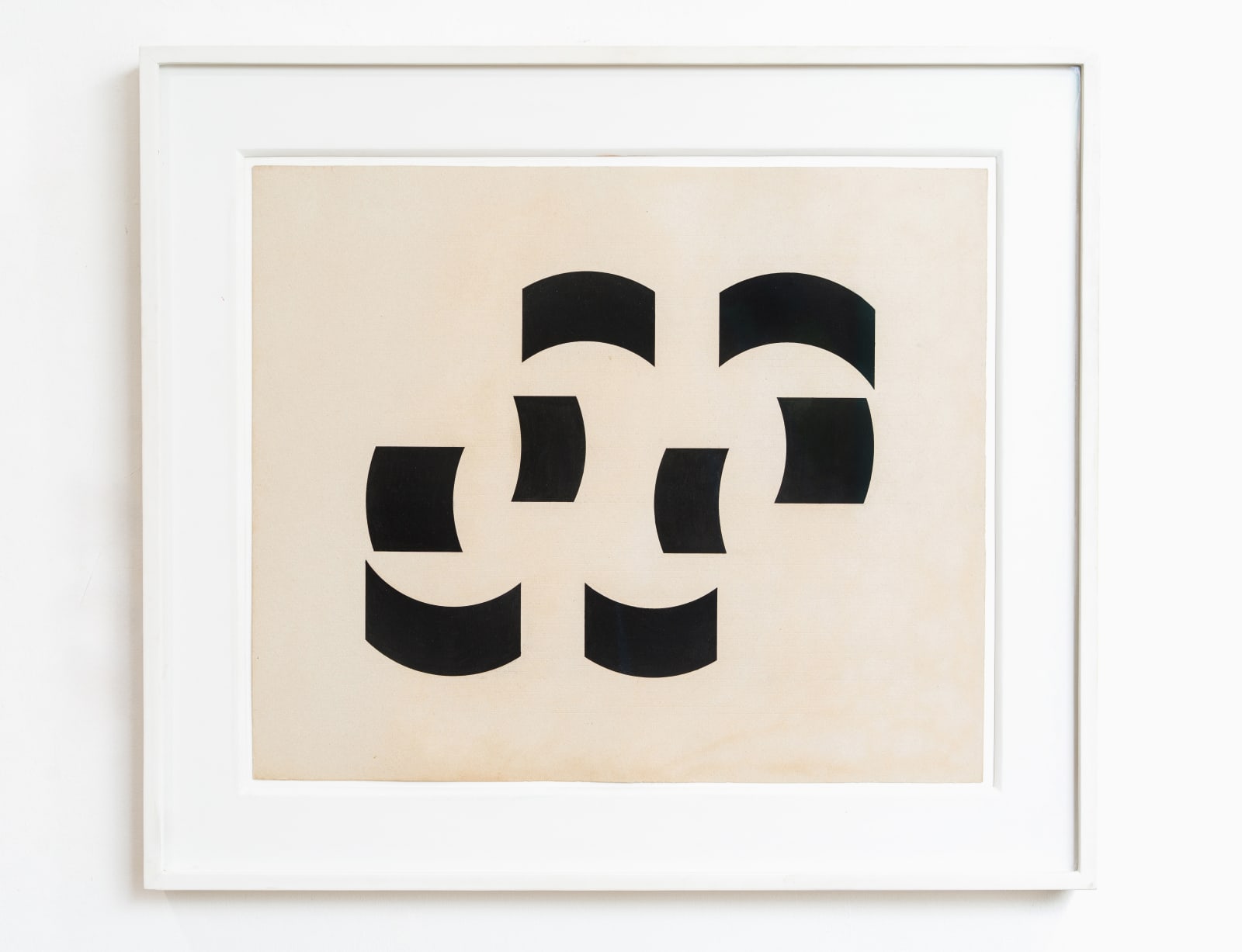
Helio Oiticica
17 3/4 x 21 1/8 inches
Certificate available
Hélio Oiticica’s series Metaesquemas, or “meta-schemes”, are a series of gouaches on cardboard the artist made in 1957-58. Noted for their geometric energy, Oiticica sought to “cleanse color, leaving the cardboard raw” and produce works that lie in between painting and drawing. The series was created during a time of abundant production for Oiticica. He had been working with Grupo Frente in Rio de Janeiro for a few years under the mentorship of Ivan Serpa. During this time, Oiticica was highly influenced by European modernism, particularly Paul Klee, Kazimir Malevich, and Piet Mondrian. Oiticica had been exposed to Klee and others at an early age at the São Paulo Bienal in 1953-54 as well as in the National Gallery of Art while his family briefly lived in Washington D.C. Oiticica combined his interest in Modernism with Serpa’s Concretist ideas of non-representation to begin making abstract gouaches on cardboard and oils in 1955. From there, he moved on to a series of 27 paintings titled Sécos, works that introduce geometric dynamism into his practice through subtle forms and colors. The Metaesquemas evolved from his early gouaches and his Sécos, clearing away color modulation, surface texture, and use of other materials that he saw as remnants of representation. The highly organized compositions fold, flip, reverse and transpose the same forms. This creates a vigorous visual effect that does not give into representation. Color and forms remain flat, marking but not representing space. Oiticica’s “obsessive dissection of space”, as he described it, was harnessed during these years to flatten the painting and get rid of representation. Later, he would use this same fascination in space to create his participatory installations.
-Quotes from Hélio Oiticica: To Organize Delirium, Carnegie Museum of Art and DelMonico Books, 2016
Provenance
Dickinson, LondonPrivate collection, UK
